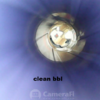I use a Hornady concentricity gauge, for me it not only improves my reloading skills it cuts down on fliers.
You seem to be groping at straws here for some reason. You have to have the right setup to take advantage of what a concentricity gauge brings to the table. In your neck turning thread I did a post using a savage axis. That axis has a factory chamber with a llloooonnnnnnggggg throat. I have to step up to 69gr bullets or longer to get the bullet to sit in the leade of the throat to be able to take advantage of a concentric bullet. Otherwise the perfectly aligned brass/bullet is going to have side to side movement/play in the chamber.
When you hit the loud button your reload is going to go to the least point of resistance. Any play in the brass/chamber fit means side to side movement. Bullet isn't set so it sits in the leade of the chamber and there's side to side play/movement. Differences in the brass hardness will come into play magnifying the movement/lack of movement for the same reloads.
What your trying to do (watered down version):
It starts at the back of the bus & how true the bolt face is to the chamber. Serous shooters have their actions worked/trued or some mfg's like savage use a floating bolt head that squares the brass to the chamber. The chamber's body and your reloading dies should match. Dimensions like how much you size the body down or how far back you set the shoulder are important. That's why a lot of people only neck size their brass when reloading for the single shots/bolt actions. The brass's neck plays a huge role in accuracy consistency. Measure your reload & measure your fired cases. This will tell you what kind of play you have in the neck area and how much neck tension you have to play with. The bullet should not only sit into the leade of the chamber the angle of the bullet's octave should match the angle of the leade. A picture of the leade/neck area of a custom 308w bbl.

I've used apache bbl.'s that were cut for the 175gr smk bullets in the 308w in the past. Still have 1 laying around with a 100 round count down the tube in it. Worked up a load then took it off the rifle. The bbl pictured above is a custom shilen bbl that is 30" long, is 300"-308" 6r, chambered in 308w match with a .340" chamber and a 1 in 14 twist. The leade is cut for the 155gr smk palma bullets. I actually bought the bbl for shooting cast bullets. That picture was taken after 1000+ rounds with cast bullets thru it with 700+ of them loaded with 30,000+/- psi loads. As you can see or more importantly what you don't see is any wear in the leade's. The .340" is the size of the neck of the chamber, wanted that for the thicker lc brass and larger .310/.311 cast bullets.
Why all this?
Because you need to measure your fired brass, figure out what leade you have along with any wear/damage in that area. The measure to see if you can even make the oal of your reload long enough to fit into the leade of the throat of the chambers. How generous the necks in the chambers are along with if the ball throat is still there and concentric.
At the end of the day:
Neck turning and concentricity gauges are going to do much for you if your bolt face isn't true to the chamber OR.
Your brass is sized smaller than 1/1000th's in the body & neck area and 2/1000th's max at the shoulder length compared to the chamber.
The bullet you chose can't be loaded long enough to fit into the leade of the throats
If the throat was either cut too long, cut wrong, erosion, offset doesn't matter want you do
Then you can get into things like brass, consistent ignition, powders and their short start pressures.
A good place to start is by looking at your bolt faces and pitting. Too much pitting with a low round count is not a good thing.
Sorry for being long winded but you need to actually do some measuring to see if any of the things your asked about will make any difference in accuracy in your rifles. If your reloads are sitting 1/8" off the lands it really doesn't matter what you do. 10/1000th's" or less into something that isn't eroded or worse, it's game on.





